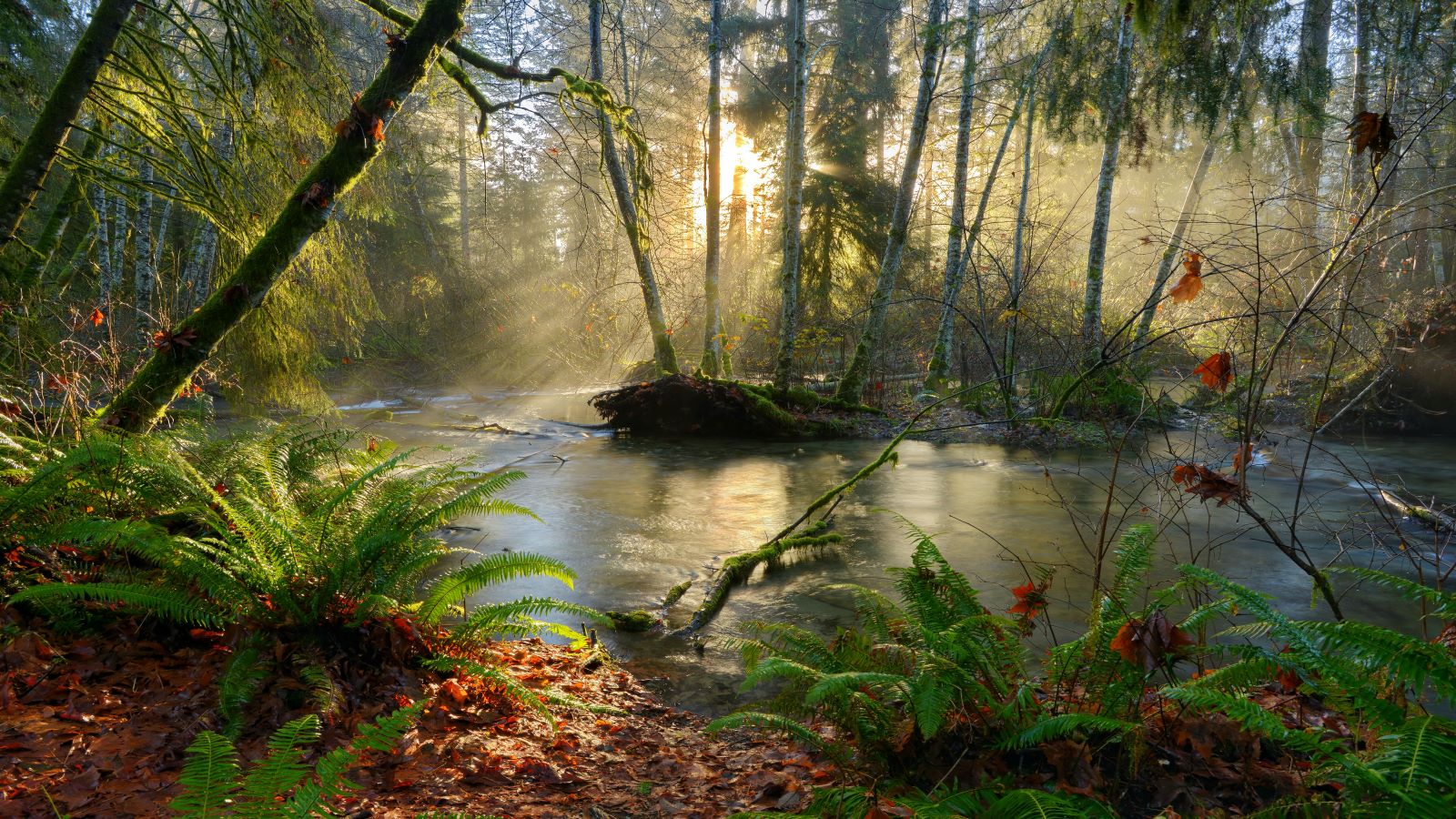
Sean Hoffmann
Former Federal Legislative Advocate, Environment America
Congress is providing more funding for infrastructure to help keep our waters clean.
Former Federal Legislative Advocate, Environment America
For many of us growing up, water was a source of formative experiences and cherished memories. For me, that source was the Neshaminy Creek in Bucks County, Pennsylvania. As far as waterways go, it’s just a modest tributary of the Delaware River; one so shallow that an adult can almost always touch the bottom. But for my family and a select few other locals, the creek (or “crick” as my grandfather called it) was a place to enjoy the beauty of Pennsylvania’s natural world. As a kid, I spent countless hours swimming, fishing, canoeing and just plain exploring the creek and its wooded banks.
However, special places such as this might not be as idyllic as many of us assume; sewage overflows and runoff pollution from too many paved surfaces frequently make waterways across America unsafe for swimming. Fortunately, the bipartisan Infrastructure Investment and Jobs Act, which recently passed Congress, has some good news for waterways like Neshaminy Creek. The bill provides more funding to stop pollution and rejects efforts to weaken clean water protections along the way.
Everyone’s local creek, lake or beach should be safe for swimming, but too often, that’s not the case. Every year in the United States, millions of people get sick from swimming in water contaminated with sewage or runoff from paved surfaces. As we document in our 2021 Safe for Swimming Report, more than half of all the 3,166 beaches across America that we reviewed were unsafe for swimming on at least one day in 2020. I’m not sure how often the creek gets tested for pollution, if it gets tested at all. It could easily be one of the many waterways Americans love that are unsafe for swimming.
We have so many unsafe beaches and waterways because America’s wastewater infrastructure has been badly outdated and in disrepair for too long. Many cities and towns, especially in the Northeast, where I’m from, have combined sewer systems, which collect rainwater runoff, domestic sewage, and industrial wastewater into one pipe — and therefore empty raw sewage into the nearest waterway when it rains too much. Additionally, overdevelopment has destroyed huge swaths of America’s wetlands, which can help filter out toxins in water. Development has also increased paved surfaces, which often deliver harmful substances into our waterways when it rains.
Fixing these problems by repairing and enhancing our infrastructure has long been in our grasp. For example, we’ve had the ability to address pollution problems by restoring wetlands and implementing green infrastructure such as rain gardens that can absorb stormwater. We’ve also been able to ensure that less wastewater makes it into our waterways by separating our combined sewage infrastructure and installing filtration systems (such as baffle boxes) to trap solid waste and other pollutants. Additionally, in places with fast-growing populations, we can enlarge sewers and improve pump stations and treatment plants. That could prevent sewage leakage and ensure we effectively treat water before discharging it into waterways. But this all takes money. Lots of it.
That’s why Environment America has been advocating for Congress to take action to clean up our water for years. Since many Americans, like me, do not realize that their favorite local waterway might be unsafe, or what to do about it, Environment America set out to research solutions and raise awareness of this issue. In the past year alone, we’ve released our Path to Cleaner Water report and Blueprint for America, which outlines specific ways that communities can improve their infrastructure to make waterways safe for swimming. We rallied businesses and local elected officials across the United States to sign letters to Congress in support of big investments in infrastructure. We took their message directly to Capitol Hill by holding dozens of lobby meetings with members of Congress and their staff.
While fixing our infrastructure is crucial to clean up our waters, it makes no sense to weaken the very clean water protections that we are providing funding to meet. So we vigorously and successfully opposed efforts by water utility lobbyists to insert a loophole into water infrastructure funding bills that would have allowed sewage treatment plants to keep dumping the same levels of pollution into our waters for twice as long as the Clean Water Act currently allows. And we similarly beat back a last-minute effort to revive the Dirty Water Rule, which put thousands of streams and wetlands at risk of pollution.
All of this work has paid off. Congress’ bipartisan Infrastructure Investment and Jobs Act will allocate $11.7 billion over five years in new funding to the Clean Water State Revolving Fund (SRF). This fund will provide loans to states to repair and enhance their infrastructure to make our waterways safe for swimming. The bill provides more SRF funding over a five-year period than ever before and represents a 61% increase over the most recent five-year funding period. We thank the committee chair and subchair, Reps. Peter DeFazio of Oregon and Grace Napolitano of California, for their tireless work in getting this funding across the finish line.

Photo by Ron Otsu via Unsplash
But this must just be the start if we truly want to meet America’s water infrastructure needs. The Environmental Protection Agency estimates that it will cost us around $271 billion over the next 20 years to restore and enhance our clean water infrastructure to ensure our waterways won’t make swimmers sick. The American Society of Civil Engineers estimates that my home state of Pennsylvania alone will have an $8.4 billion wastewater infrastructure funding gap over the next 10 years.
In addition to increasing funding for the SRF, Congress should ensure that 20% of funding goes towards green infrastructure such as wetlands restoration and rain gardens, and ensure that small and disadvantaged communities have access to the funds as grants so that they can afford the upgrades and repairs they need.
We should celebrate our national progress toward fixing our water infrastructure. However, we still have a long way to go before all of our favorite waters (including the Neshaminy “crick”) are safe for swimming.
Former Federal Legislative Advocate, Environment America
